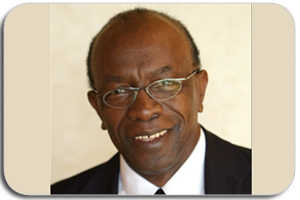Trinidad and Tobago is a twin island nation which lies in the Southern Caribbean Sea. The southern tip of Trinidad lies 11 kilometers North from the Venezuelan mainland, while Tobago lies approximately 30 kilometers northeast of Trinidad.
Together, they have a 5,128 km² area, and a total of 1,229,953 inhabitants.
Trinidad, the largest, who passed from Spain to Britain; and Tobago, who passed between Britain and France several times, finally gained their independence in 1962 following which Trinidad and Tobago became a Republic on August 1st 1976.The country is member of the Commonwealth since its independence.
Government and Politics:
Trinidad and Tobago is a parliamentary democracy, with a president elected on a 5-year term basis by members of the Parliament.
The president, Maxwell Richards, is empowered since 17th of March 2003, reelected on 22nd of February 2008.
The government influences the economy significantly by its relationship with foreign companies, from which it evolves significant income, as well as with its new politic of diversification of the economy.
Economy:
The country’s major activities are the exploitation of petroleum reserves and refining of local and imported oils and their subsequent.
If the island of Trinidad is more industrialized, specialized in the oil and gas sector, although agriculture, tourism, manufacturing and construction also are important sectors; tourism and agriculture are the dominating sectors in Tobago.
The country must provide itself with consumption goods, which payments are possible thanks to the export of petroleum and products, invisible exports, tourism, and the transshipment trade.
However, in 1986, the government had to face a primal adjustment in economic policy and start a program supported by the World Bank and the IMF: the country initiated a complex transition from an oil-dependent economy based on the public sector, to a more diversified and private one.
Compared with the regional average of 3.7% for the same period, this new decision boosted the economic growth between 2000 and 2007 to an 8%. Nevertheless, it has slowed down since and
contracted about 2.7% in 2009.
Moreover, the transition from an oil-based economy to a natural gas based economy has been stimulating investments in liquefied natural gas (LNG), petrochemicals, and steel and through this economic growth. In 2007, natural gas production averaged 4 billion standard cubic feet per day (mmscf/d), compared with 3.2 bcf/d in 2005.
A century of commercial oil production
Trinidad and Tobago is the Caribbean\'s largest producer of oil and natural gas. According to the 2008 BP Statistical Energy Survey, the country showed oil reserves of 0.793 billion barrels at the end of 2007 and produced an average of 154.1 thousand barrels of crude oil per day. Both natural gas and oil exploration activities in Trinidad and Tobago have pursued growing heavily since the beginning of the 21st century.
Most oil production in Trinidad and Tobago occurs offshore. The largest crude oil producers in Trinidad and Tobago include BHP Billiton and the state-owned Petrotrin company, which each possess about 25% of the country’s crude oil production.
Smaller refineries mostly produce petroleum products answering the National needs, whereas the larger ones are concentrated towards exports to the United States and other market.
Trinidad and Tobago is this year celebration a century of commercial oil production, which has been a key factor of their development.
Liquefied Natural Gas resources
While crude oil production has only slightly augmented in the past few years, natural gas production in Trinidad and Tobago has increased dramatically.
Detaining natural gas reserves of 0.48 trillion cubic meters and natural gas production of 39 billion cubic meters according to the 2008 BP Statistical Energy Survey, the country has been transformed into one of the leading natural gas development centers in the world.
Also, Trinidad has a large petrochemical industry, with nine ammonia complexes, six methanol units, a urea plant, and an iron and steel complex.
The country has benefited from a rising foreign investment into Liquefied Natural Gas, with BP Trinidad and Tobago (BPTT), British Gas (BG) and Chevron being the main actors of this flourishing sector.
Large exporter:
Natural gas production in the islands having heavily been increasing in the recent years, the country is now the major LNG supplier of the United States, and one of the main LNG exporter in the world.
Today, although the US LNG imports have been declining since 2009, the exports of LNG to new European and Asian markets as well as the opening of diverse new regasification terminals in the last two years have helped counteracting this situation.
 Mr Jack WarnerMinister of Works and TransportMinistry
Mr Jack WarnerMinister of Works and TransportMinistry Mrs Carolyn Seepersad-BachanMinister of Energy and Energy AffairsMinistry
Mrs Carolyn Seepersad-BachanMinister of Energy and Energy AffairsMinistry Dr. Carson CharlesPresidentNIDCO
Dr. Carson CharlesPresidentNIDCO Mr Ali KhanCountry DirectorHilton & Conference Center
Mr Ali KhanCountry DirectorHilton & Conference Center Mr Andrew McEachraneThe Trinidad & Tobago Stock Exchange LtdN/A
Mr Andrew McEachraneThe Trinidad & Tobago Stock Exchange LtdN/A H.E. Ms. Glenda Morean-PhillipAmbassador of Trinidad and Tobago to the United StatesEmbassy of Trinidad and Tobago to the United States
H.E. Ms. Glenda Morean-PhillipAmbassador of Trinidad and Tobago to the United StatesEmbassy of Trinidad and Tobago to the United States NIDCOInfrastructure
NIDCOInfrastructure Hilton Trinidad & Conference CentreTourism
Hilton Trinidad & Conference CentreTourism